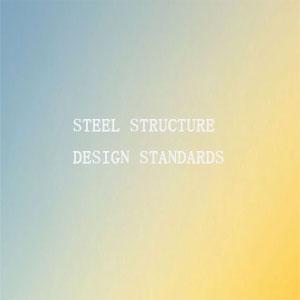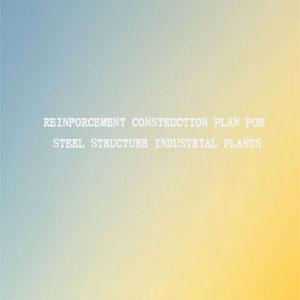Standard selection of materials for coastal steel structure workshops
Constructing steel structure factories in coastal cities faces many special environmental challenges, such as high humidity, strong salt spray erosion, and frequent typhoons. Therefore, scientifically and rationally determining its material standards is of great significance for ensuring the quality, durability and safety of Steel structure workshops. Among them, color steel plates and color steel sandwich panels, as key building materials, need to be explored in depth. Standard settings.

The main structural steel of steel structure factories in coastal areas needs to have excellent corrosion resistance and high strength properties. Generally, low-alloy high-strength structural steel such as Q345B is preferred. Its yield strength is high and can effectively withstand various loads, ensuring the stability of the factory structure. In the surface treatment of steel, hot-dip galvanizing is an extremely important anti-corrosion method. The galvanized layer can form a strong protective barrier on the surface of the steel, effectively blocking the erosion of air, moisture and salt spray. For coastal environments, the thickness of the galvanized layer is recommended to be no less than 275g/m². This thickness of zinc coating significantly extends the service life of the steel and reduces the risk of structural strength loss due to corrosion.
In addition to galvanizing, the steel surface can also be sprayed with fluorocarbon paint. Fluorocarbon paint has super weather resistance and can withstand long-term exposure to ultraviolet rays without fading or powdering. At the same time, its corrosion resistance is also very good, and it can effectively resist the erosion of harsh environmental factors such as salt spray. In terms of welding technology, relevant specifications must be strictly followed to ensure weld quality. The weld seam should be in a full and uniform state to avoid the occurrence of defects such as pores and slag inclusions. Moreover, after the welding is completed, anti-corrosion treatment should be carried out on the weld in time, such as painting with zinc-rich primer, to enhance the corrosion resistance of the weld and ensure the integrity and durability of the entire main structure.
2. Analysis of color steel plate material standards Color steel plates play the role of wall and roof enclosures in steel structure factories in coastal cities, and the determination of their material standards is crucial. The substrate material of color steel plate is one of the key factors affecting its corrosion resistance. Common substrates include galvanized substrates and aluminum-zinc coated substrates. The galvanized base plate forms a protective film by galvanizing the surface of the steel plate, which has certain anti-corrosion capabilities. The aluminum-zinc substrate is even more superior. The aluminum-zinc alloy layer on its surface combines the oxidation resistance of aluminum and the sacrificial anode protection of zinc. In a salt spray environment, galvanized substrates can form a dense aluminum oxide protective film, which effectively prevents further corrosion reactions. Its corrosion resistance is significantly improved compared to galvanized substrates.
In terms of substrate thickness, taking into account the characteristics of frequent strong winds in coastal areas, the thickness of the wall color steel plate substrate should not be less than 0.5mm, and the roof color steel plate substrate thickness should not be less than 0.6mm. This can ensure that the color steel plate will not be easily deformed or damaged when subjected to wind force. damage. The coating of color steel plates cannot be ignored either. The type of coating directly determines the weather resistance, salt spray resistance and self-cleaning properties of the color steel plate. Polyester coating is a common one. It has certain decorative and protective properties and is relatively affordable. However, in harsh coastal environments, its service life is relatively short, generally around 5-10 years. Silicon-modified polyester coating is an improvement on polyester coating. Its weather resistance and corrosion resistance are enhanced, and its service life can be extended to 10-15 years. Fluorocarbon coating is a high-end product among color steel plate coatings. It has unparalleled weather resistance and can maintain good performance for more than 20 years in a coastal environment. It also has excellent self-cleaning properties and can reduce dust and dirt. Attached to keep the appearance of the factory clean and beautiful. However, the cost of fluorocarbon coating is relatively high, and factors such as the service life of the plant, budget, and appearance requirements need to be considered when selecting.
3. Research on material standards of color steel sandwich panels Color steel sandwich panels are mainly used for thermal insulation and space partitioning in Steel structure workshops. The performance of the sandwich material plays a decisive role in the overall performance of the color steel sandwich panel. In coastal areas, due to high humidity, priority should be given to sandwich materials with good hydrophobicity, such as inorganic fiber materials such as rock wool and glass wool. Rock wool sandwich panels have excellent thermal insulation properties and low thermal conductivity, which can effectively prevent heat transfer and reduce energy consumption inside the factory. At the same time, rock wool is a flame-retardant Class A material with extremely high fire safety. When a fire occurs, it can effectively delay the spread of fire and gain valuable time for evacuation and fire rescue. In addition to having certain thermal insulation properties, glass wool sandwich panels also have good sound absorption and noise reduction effects. They are suitable for factory environments that have high requirements for noise control, such as mechanical processing workshops.
The thickness of the sandwich panel should be determined based on the climatic conditions in coastal areas and the specific thermal insulation needs of the factory building. Generally speaking, the thickness of the insulation layer is between 50 - 150mm. If the thickness is too small, it may not be able to meet the good thermal insulation effect; if the thickness is too large, it will increase the cost and weight of the factory. The panel material and coating requirements of color steel sandwich panels are similar to those of color steel panels, and they both need to have strong corrosion resistance and weather resistance. In terms of connection method, ensure that the connection between the sandwich panels is tight and firm to prevent rainwater leakage. For example, advanced connection technologies such as tongue-and-groove connections or hidden rivet connections can be used. The tongue-and-groove connection uses a special concave-convex structure design to enable the sandwich panels to bite tightly when spliced, effectively preventing rainwater penetration; the hidden rivet connection hides the rivets inside the sandwich panel, which not only ensures the connection strength but also avoids Corrosion problems caused by exposed rivets. During the installation process, the verticality and flatness of the sandwich panel must be strictly controlled to avoid gaps due to improper installation, which may lead to accumulation of rainwater, thereby accelerating corrosion and damage of the sandwich panel.
4. Comprehensive consideration and collaboration to determine material standards
Determining the material standards for steel structure factory buildings in coastal cities is not an isolated decision-making process, but requires comprehensive consideration of multiple factors. First of all, the specific use of the factory must be combined, such as whether it is used in different industries such as food processing, electronic production, or general warehousing, which have different requirements for the internal environment of the factory, thus affecting the choice of materials. Secondly, budget is also an important limiting factor. On the premise of meeting basic performance requirements, materials must be selected rationally to avoid unnecessary cost waste. Furthermore, the service life of the factory building is also a key indicator. If it is a permanent factory building that will be used for a long time, materials with better durability should be given priority. For some temporary or short-term used factories, the material performance requirements can be appropriately reduced. , to reduce costs.
In actual operations, the builder should actively conduct in-depth communication and collaboration with professional steel structure design units and material suppliers. The steel structure design unit can accurately calculate the mechanical properties and dosage of various materials based on the environmental characteristics of coastal areas and the design requirements of the factory building, and formulate scientific and reasonable design plans. Material suppliers can provide detailed information on material performance, price, delivery cycle, etc. to help builders make the best choice among many material brands and models. Through this multi-party collaboration, we can finally determine the steel structure factory material standards that are most suitable for the special environment of coastal cities, create a steel structure factory that not only meets functional needs but is highly cost-effective, and provides opportunities for industrial development and economic construction in coastal areas. Solid and reliable building facilities guarantee.






